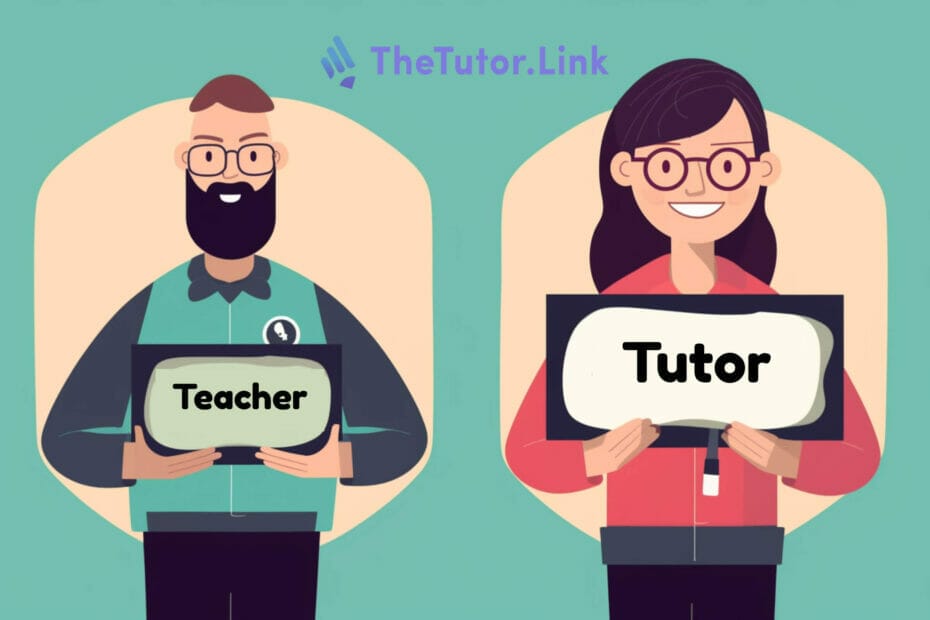Teacher Vs Tutor – What Are The Main Differences?
Teacher Vs Tutor – What Are The Salary Differences?
Being a teacher or tutor can be an incredibly rewarding job. Teaching others, especially children, is an important job that requires patience and skill. However, there are differences between being a teacher and being a tutor which can affect the way one approaches their job.
In this article, we will explore the difference between teachers and tutors to better understand what each profession entails.
The primary difference between teacher and tutor lies in the setting in which they work. Teachers generally work in school settings with large groups of students while tutors typically work with smaller groups or even one-on-one sessions with students outside of school hours. This difference affects how teaching methods are used for each type of professional as well as the expectations for the student’s achievement level.
Setting And Group Size
The cost of hiring a tutor versus a teacher can vary drastically depending on the student’s needs and the type of learning they’re looking for. Tutoring sessions are usually more affordable in comparison to teachers, but this doesn’t always make them the better choice. Time management is also an important factor to consider when deciding between a tutor and a teacher.

A tutor may allow for more flexible scheduling than what would typically be available with a traditional classroom setting, giving students and parents greater control over when their lessons take place.
When it comes to teaching methods, there are definite differences between tutors and teachers; these differences often come down to individual preference and style. While both types of educators focus on helping students learn specific topics in an effective way, each has their own unique approach that sets them apart from one another.
For example, some tutors prefer to use hands-on activities while others rely heavily on lectures or instruction manuals. On the other hand, many teachers use interactive activities with their students as well as technology-based resources like slideshows or videos.
It’s important to weigh all of these factors carefully before making a decision about who will best meet your needs as an educator or student. With so many different options out there, it’s possible for someone to find the perfect fit for their budget as well as their learning style – regardless of whether they choose a tutor or teacher. Clearly understanding each option can help alleviate any confusion or frustration that might arise during the selection process. Moving forward, let’s explore these teaching methods in greater detail…
Teaching Methods
Teaching methods vary between teachers and tutors, but both share common goals of helping their students learn and grow.
Teachers typically work in a classroom setting with a larger target audience and use lecture-style teaching techniques to help students understand a subject.
On the other hand, tutors often have more personalized learning environments with one or a few students, allowing for more individualized instruction tailored to the student’s needs.
Tutors also often focus on problem solving or other interactive activities that can help the student better grasp a concept.
Both teachers and tutors strive to create an environment where students feel comfortable enough to ask questions and participate in discussions.
The teacher may provide an open forum for questions during lecture while the tutor might set aside time specifically for answering questions or guiding problem-solving activities.
Regardless of the teaching method used, both teachers and tutors aim to ensure their students are engaged and actively learning throughout their lesson plans.
While teaching methods might differ between teachers and tutors, each strives to create an atmosphere that promotes learning.
The next section will look at student achievement expectations and how they are measured in both teaching contexts.
Student Achievement Expectations
The transition from teacher to tutor is a dynamic one, as the expectations and responsibilities of each role are significantly different. As a teacher, one is responsible for providing instruction to an entire classroom of students. A tutor, on the other hand, works closely with an individual student or small group of students in order to foster their growth and development.
When it comes to student achievement expectations, tutors must employ motivation strategies that are tailored to the individual’s learning style and level of understanding. For example, a visual learner may need more visual aids such as diagrams or flowcharts in order to understand a particular concept. Likewise, an auditory learner may benefit from verbal explanations and audio recordings.
Through this process, tutors can help students gain confidence in their own abilities and develop important skills for academic success. It is also important for tutors to provide timely feedback so that learners can understand where they stand with respect to their goals. Tutors should be able to create action plans with achievable steps that will allow their students to reach those goals in an efficient manner.
With this approach, tutors can help their students achieve academic success while building strong relationships built on trust and mutual understanding. These strategies for promoting student achievement require special qualifications and experience on the part of the tutor. In order to ensure that students receive quality education support services, it is vital that tutors possess both subject matter expertise as well as excellent interpersonal skills.
Qualifications And Experience
Teachers and tutors both have their own individual qualifications and experience that make them well-suited for their respective roles. For teachers, this means having the right certifications and degree in order to teach at a school or institution.
Tutors, on the other hand, may come from any educational background but typically need to demonstrate a mastery of the subject they are tutoring in order to attract students. In terms of cost comparison, teachers generally require more upfront payment as they are employed by an institution while tutors charge per lesson or project. Scheduling flexibility can also vary depending on the teacher’s availability since they are bound by a set curriculum, whereas tutors can create their own schedule depending on their students’ needs.
Without diving too deep into the details of each profession, one clear distinction between them is their ability to customize instruction for each student. Teachers often have a larger class size and may not be able to give each student individualized attention while tutors can tailor lessons based on an individual’s learning style and interests.
This results in a more effective learning process for both parties as the tutor is able to focus on what matters most for each student. By understanding the differences between being a teacher or tutor, it becomes evident that there are certain benefits associated with either role that should be taken into consideration when making a decision about which profession is right for you.
Benefits Of Being A Teacher Or Tutor
Teaching or tutoring is often seen as a thankless job, but there are many benefits that come with it.
Interestingly, the flexibility that comes with being a teacher or tutor can be both a blessing and a curse. You may have the freedom to set your own hours, but you could also find yourself working late into the evening. Despite this, being able to choose when and where you work can be incredibly liberating.
Furthermore, teaching or tutoring can offer some great financial rewards. Depending on the job, salaries can range from modest to quite generous; in addition to this, tutors may also receive bonuses for their achievements if they reach certain targets. Of course, these rewards are not guaranteed and will depend on many different factors such as location and experience level.
Finally, another benefit of being a teacher or tutor is that you get to work with people from all walks of life. You’ll get to meet some really wonderful students who can remind you why you chose to do this job in the first place! Not only that, but you’ll also get the chance to learn about different cultures and lifestyles too – something which can’t always be said for other jobs out there.
Frequently Asked Questions
How Much Do Teachers And Tutors Typically Charge?
The cost of tutoring and teaching services can vary greatly depending on the time commitment, student preference, and the qualifications of the teacher or tutor.
Generally speaking, teachers who are employed by a school district typically earn salaries according to their experience and credentials.
On the other hand, private tutors may set their own rates according to their experience and credentials, as well as the student’s needs.
Typically, private tutors charge anywhere from $20 to $50 an hour for individual sessions, while group classes may be more affordable.
It is important to do your research in order to find a tutor or teacher that is best suited for your needs and budget.
How Long Does A Teaching Or Tutoring Session Usually Last?
Teaching and tutoring sessions typically last anywhere from 30 minutes to an hour depending on the student teacher ratio, teaching methods, and subject matter.
In some cases, sessions may be extended for students who need extra attention or guidance. For example, a tutor might spend more time with an individual student in order to help them understand difficult concepts.
On the other hand, a teacher might have a set time limit in order to cover material for a large group of students. Ultimately, the duration of each session will depend on the specific situation at hand.
What Is The Difference Between A Teacher And A Tutor?
The roles of teachers and tutors can often overlap, but there are some key differences that should be taken into consideration.
Generally speaking, teachers have a broader role in terms of expectations for student learning and communication styles. They are responsible for providing instruction to their students in order to facilitate learning and progress.
On the other hand, tutors focus more specifically on one-on-one assistance with topics or skills that a student may need help understanding. The tutor provides individualized support and guidance in order to help the student gain mastery over subject matter.
It’s important to note that both teachers and tutors play an integral role in helping students achieve success.
What Is The Most Important Characteristic Of A Successful Teacher Or Tutor?
The most important characteristic of a successful teacher or tutor is their ability to manage time effectively and communicate with their students.
To be successful, they must possess the skill to juggle multiple tasks while still being able to keep their students engaged.
Time management and communication skills are key to any teaching job, as they allow the instructor to effectively convey ideas and create an enjoyable learning environment for everyone involved.
Additionally, having an organized approach towards teaching helps teachers and tutors stay on track and ensure that all topics are properly covered within a given timeline.
All in all, it is essential for teachers and tutors to have strong time management and communication skills in order to be successful educators.
What Are The Most Common Challenges Faced By Teachers And Tutors?
Time management and classroom etiquette are two of the most common challenges faced by teachers and tutors alike.
From keeping track of lesson plans to ensuring appropriate decorum in the classroom, these two areas can be particularly tricky for educators to navigate.
For example, a teacher may struggle to keep up with the pace of their curriculum, while a tutor may need to find ways to encourage respect among students during one-on-one sessions.
Ultimately, good time management and strong classroom etiquette are essential for successful teachers and tutors.
Conclusion
Teachers and tutors are both invaluable resources when it comes to education, but they each offer different advantages.
Ultimately, it’s up to the student to decide which one will best suit their needs.
As the saying goes, ‘the teacher teaches, but the tutor reaches’.
A successful teacher or tutor must be able to engage with their students in a meaningful way and be patient and understanding.
Though it can sometimes be challenging for teachers and tutors alike, this rewarding profession is an essential part of our educational system.
With the right attitude and dedication, teachers and tutors can help unlock a student’s potential and open up a world of possibilities.




